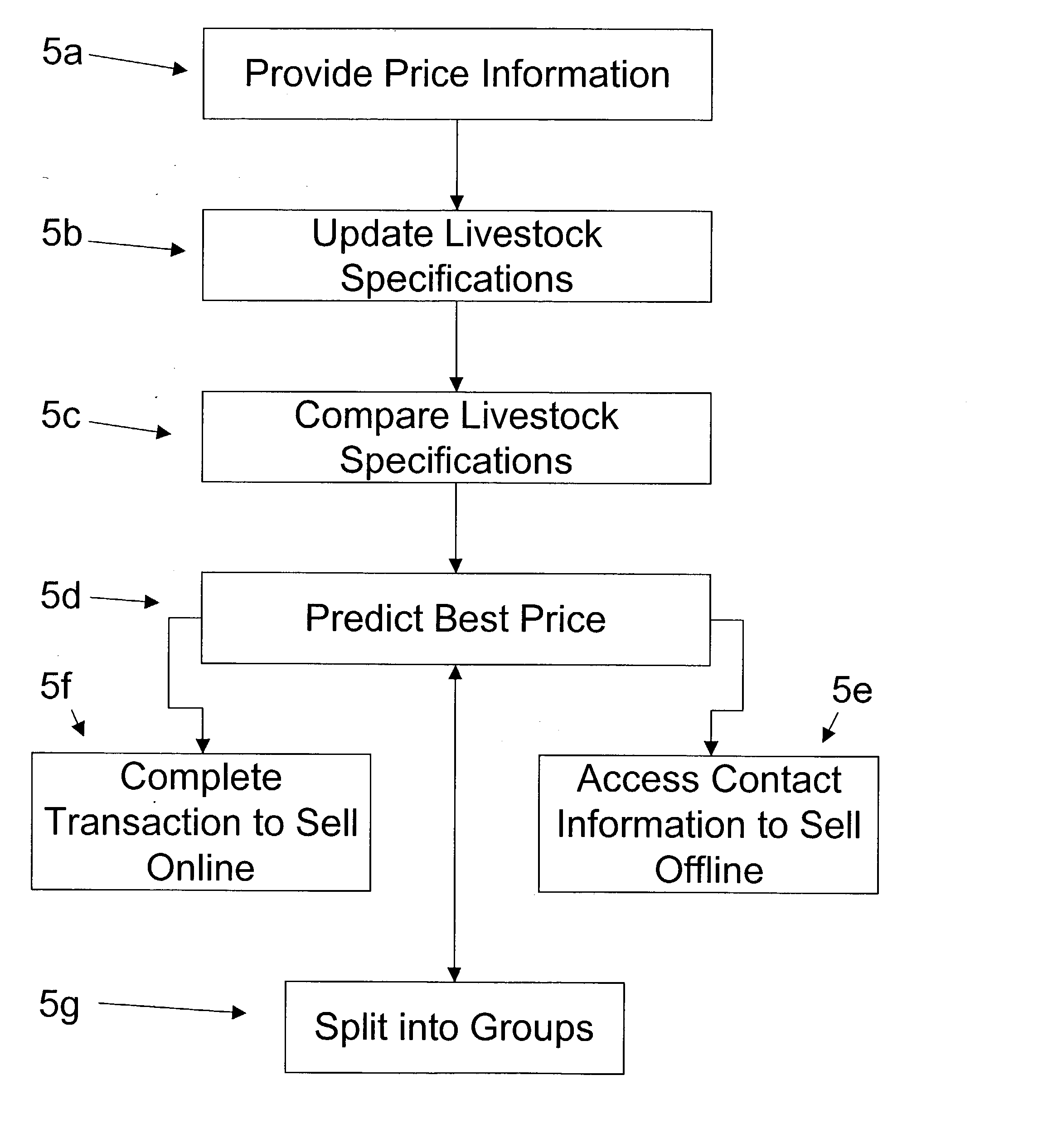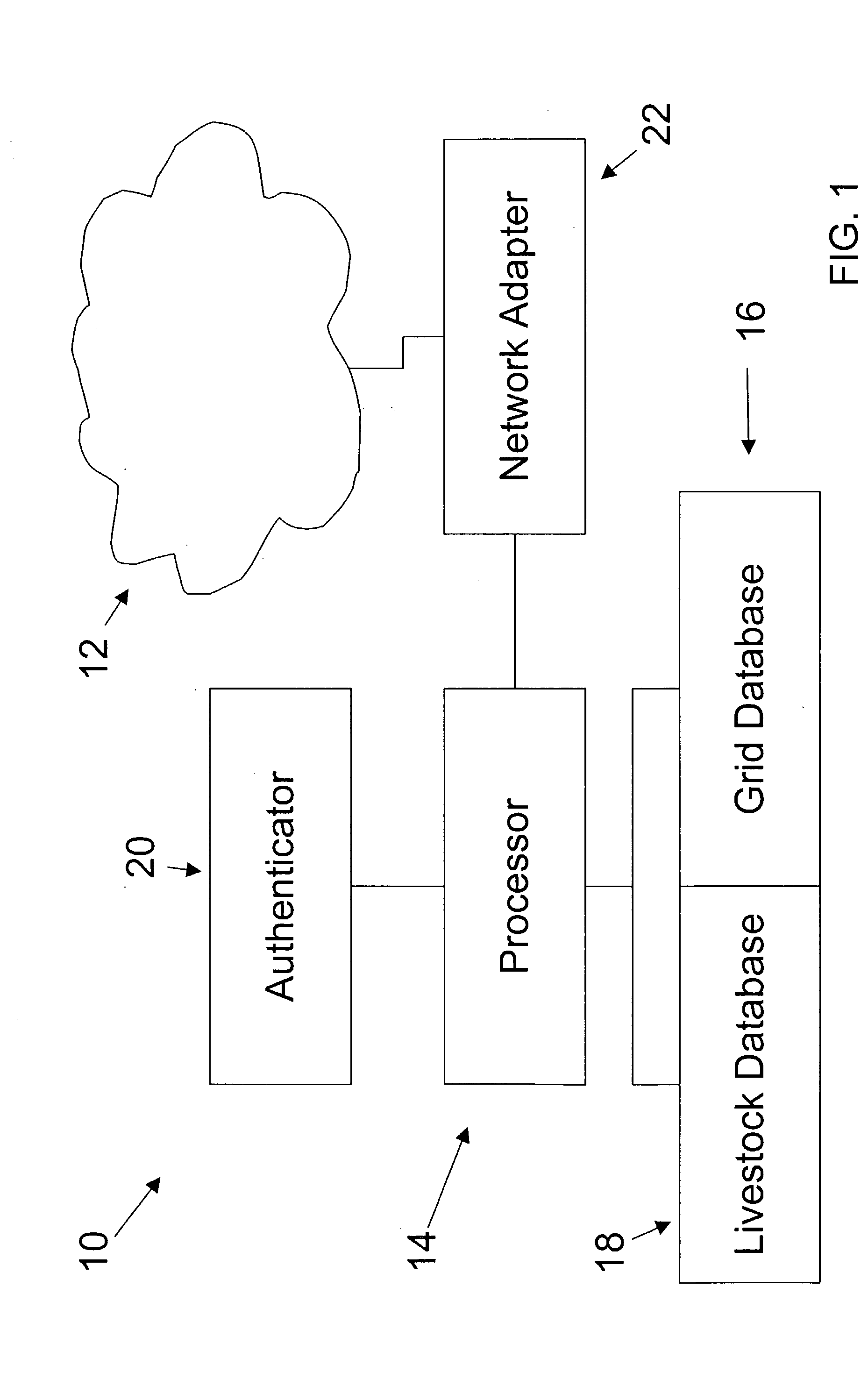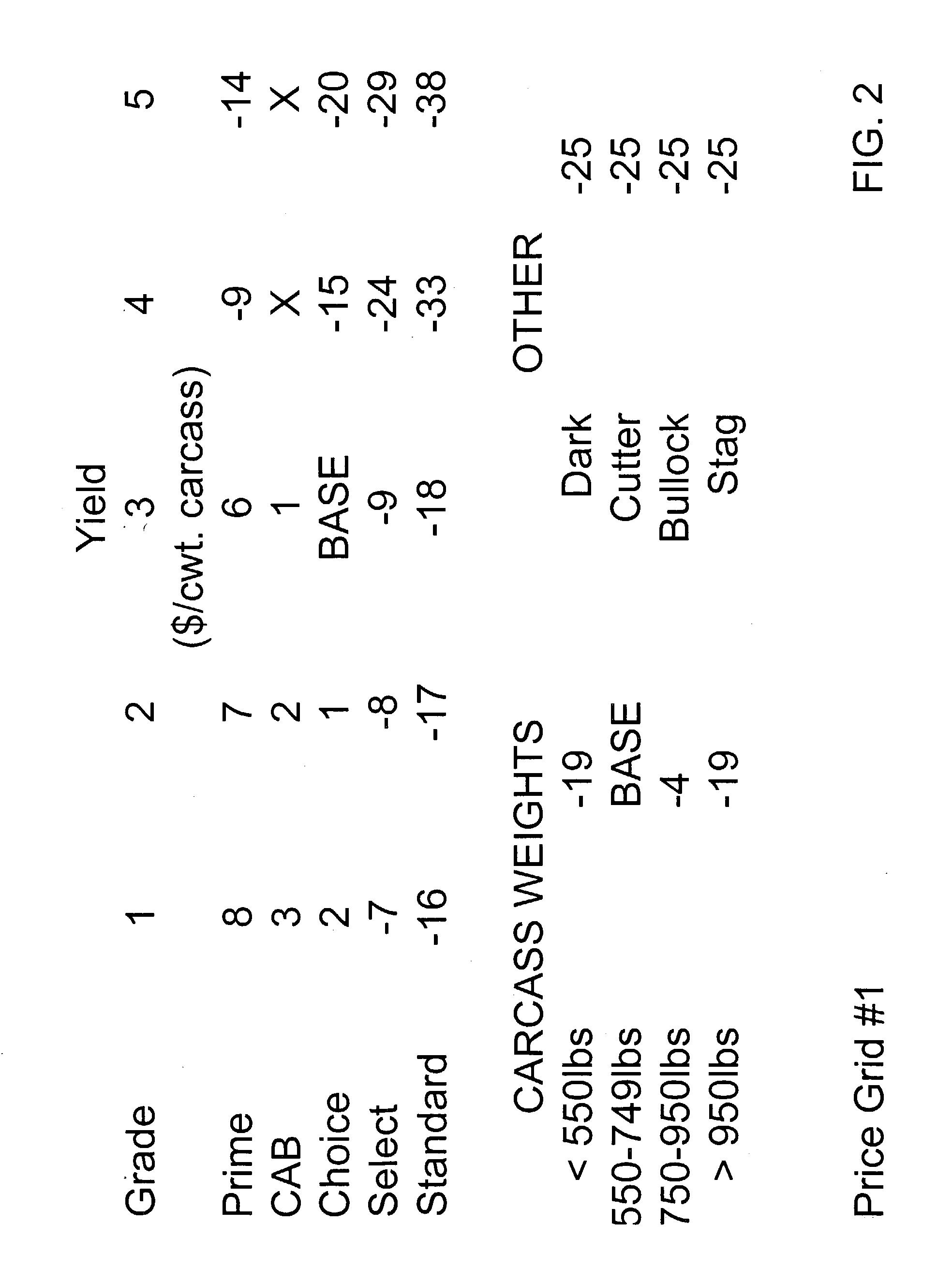Livestock pricing system
- Summary
- Abstract
- Description
- Claims
- Application Information
AI Technical Summary
Benefits of technology
Problems solved by technology
Method used
Image
Examples
Embodiment Construction
[0026] Referring to FIG. 1, the preferred livestock pricing system 10 constructed in accordance with a preferred embodiment of the present invention is illustrated connected to a network 12. The system 10 broadly comprises a processor 14 operable to predict a best price for a group of animals, a grid database 16 operable to store price information used to predict the best price, a livestock database 18 operable to store livestock specifications to compare with the price information to predict the best price, and an authenticator 20 operable to authenticate a plurality of users of the system 10 and thereby control each user's access to the price information and specifications stored in the databases 16,18. The system 10 also preferably includes a network adapter 22 to connect the system 10 to the network 12 through which the system 10 may be accessed by the users, such as buyers and sellers.
[0027] The network 12 is preferably an Internet based communications network that spans a larg...
PUM
 Login to View More
Login to View More Abstract
Description
Claims
Application Information
 Login to View More
Login to View More - R&D
- Intellectual Property
- Life Sciences
- Materials
- Tech Scout
- Unparalleled Data Quality
- Higher Quality Content
- 60% Fewer Hallucinations
Browse by: Latest US Patents, China's latest patents, Technical Efficacy Thesaurus, Application Domain, Technology Topic, Popular Technical Reports.
© 2025 PatSnap. All rights reserved.Legal|Privacy policy|Modern Slavery Act Transparency Statement|Sitemap|About US| Contact US: help@patsnap.com



